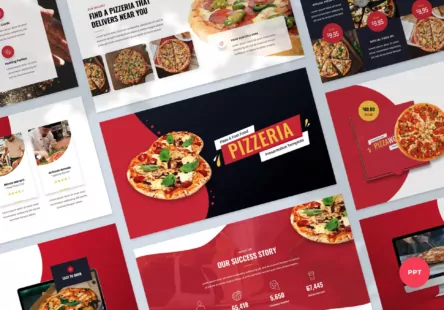Tabla de contenido
[zoomsounds id=”what-to-do-when-your-website-is-slow-some-key-tips”]
Convenience is a key reason why e-commerce is a major player in today’s market. Website speed plays a major part in that, slow website will harm your position in Google, and your sales. The ability to quickly view products, order online, make transactions, and avail services are massively appealing and often underappreciated.
Gaining bandwidth and hosting WordPress websites on fast servers is a key part of web design. But there are a lot more factors that can affect the performance of a business or store website. Dealing with them is just as important and often more effective.
Before we go into much detail regarding that, we must preface this issue with an important question.
How Bad Are Slow Websites for Business?
To thrive as an online business, you need to provide a top-notch browsing performance and customer experience. With that in mind, the limited attention spans of site visitors are not to be taken for granted.
Web pages everywhere are being optimized for speedy service. Slow websites are not a great look when you’re against stiff competition on a platform where time is of the essence.
Bad Customer Impressions
Multiple studies support that slow webs are less likely to enjoy visitors. Experts say that websites that take a few seconds too many to load lose nearly half their visitors as a result. Even for large online businesses, that can add up to millions in yearly losses.
With websites, there are two key things to keep in mind: conversion rates and bounce rates. Conversion rates are when site viewers actively engage with each new website. Bounce rates, by contrast, refer to users that open a page but leave soon afterward.
Websites with user-friendly qualities enjoy greater conversion rates and earn more revenue as a result. Slow website speed, as we learned, can cause bounce rates to skyrocket. As a result, you need to improve your site performance to retain traffic, or your company or store will not survive.
Back-End Performance
It’s not just customers that are inconvenienced by slow speed. Moderators and online staff members have to run online businesses without fail. Sluggish loading times can make that difficult.
This leads to subpar site management and a poor overall outlook. If the actual loading speed didn’t make you lose visitors, this would do it.
Regarding SEO
Ranking high on search engine results pages (SERPs) is important for succeeding as a digital enterprise. Websites are constantly crawled by Google and other browsing clients for indexing.
But Google doesn’t just assess suitability for crawling based on content. It also judges site metrics and analytics. During that, if your website experiences lagging speeds, the decline in periodic visits will make that clear to search engines.
As a result, slow websites are not favored in online searches. For start-ups, this marks the end before they’ve even begun. For more popular websites, speed issues lead to a slower but equally potent loss.
How Do Websites Become Slow?
A number of factors can affect website performance, though many of them are related to the setup. For online businesses, WordPress is the go-to content management system for designing an e-store or online service.
While WordPress provides a plethora of perks and facilities to site developers, it’s not uncommon for webpages to experience speed issues. common reasons for that, which are pretty much the same for most websites on the web, including
- Issues with site hosting service
- Cumbersome design features
- Overuse of plugins
- Lack of content optimization
- Inefficient image compression
- Issues on low-performing devices like mobiles
- These are just a few things that contribute to inactive or slow web speed.
Best Practices for Improving Site Speeds
Depending on what major issue you’re facing, there are a number of ways to make your website more receptive. Some of them are easy, while others might require a little technical assistance. Either way, it’s important to be aware of all of them if you wish to save your business.
1. Choosing Lighter Design
The aim of competitive web design is to capitalize on interactive, visually-pleasing, and convenient site features. However, developers must walk a fine line between style and substance while curating web pages.
Otherwise, they can end up cramming up features that have no real value to the business and are just there to occupy space and contribute to slow website speed.
Themes
WordPress users have the advantage of picking from a diverse selection of themes and templates. The list of options in various designs, layouts, and color schemes is seemingly endless. Choosing the right one can be instrumental in making a good first impression on users.
Some robust templates offer more facilities. While heavier themes aren’t the major cause of slow websites, they can affect the speed of a site’s interactive features pop up. If that is a major problem, opting for a lighter theme might help you solve it while maintaining a sleek, user-friendly interface.
Animations
Animated content is an increasing presence in high-end online businesses and sophisticated web services. They provide an interactive user experience and are valuable to branding. But integrating animations can slow web speed and performance if not done properly.
For WordPress users, CSS and JavaScript are the main resources for creating animations. JavaScript is better for complex content with a diverse range of motion capabilities.
However, for business sites, this type of content can be overkill and hamper loading and performance. CSS is the better choice for lighter yet equally immaculate visual effects.

2. Manage Extensions and Plugins
Websites founded through WordPress are spoiled for choice when it comes to plugins and add-ons. E-commerce sites, in particular, have access to quite a bit of nifty software. These include plugins for booking systems, multilingual translation, payment gateway integration, WooCommerce, and much more.
But while these extensions can be quite alluring, too many of them can take a toll on web page performance. Many slow sites often possess too many of them. It is recommended that businesses stick to the ones they need and get rid of as many superfluous or inactive plugins as possible.
Instead of exploiting plugins, web designers should prioritize organic, hands-on approaches to site building. Once the bulk of the basic site is optimized, plugins can later be added as convenient without burdening the server.
3. Smart Coding
Programming protocols like JavaScript and HTML are the major players in web page coding. As a website gains activity, it builds up more and more coding files.
Processing these files takes time, and too many of them lead to slow website loading. This can be fixed by using compressed coding formats, which improves performance by slashing the inventory of codes by as much as 80%.

4. Content Management
Content is one of the most valuable assets to web-based services and corporate sites. But using it effectively involves presenting it in a way that attracts traffic without affecting the user experience. That is something rookie designers can forget in the thrill of curating an awesome-looking website without knowing how to sustain it.
What is a CDN?
Pages that experience large levels of traffic, especially from overseas users, must be able to withstand the weight of these visits without lagging. If not, they can slow down the websites substantially.
Content delivery networks (CDNs) are global servers that provide hosting and site performance solutions to websites. They form wide-ranging connections to form pipelines that make file sharing much quicker.
CDNs promote web caching, which helps optimize media files to occupy less server space and resources. This discourages inefficient use of bandwidth, diminishes the load on servers, and improves web speed and performance.
Next-Gen Image Formats
Image files are everywhere on the internet and are valuable front-end marketing and branding resources for online services. The bulk of images on the internet exists in JPG and PNG formats. These formats are known for providing high-quality visual media.
However, one major issue with JPG and PNG media is their size. To maintain image quality, they must occupy more server space, which can prolong page processing and lead to slow website loading times,
The best solution to this involves what is known as “Next-Gen Image Formats.” These are file formats that compress images while maintaining maximum resolution and lossless quality.
WebP
This is the most well-known Next Gen Format for images. WebP image files can be 25% smaller than PNG and at least 30% smaller than JPG files of equal quality and dimensions. This helps improve website speed and performance by a noticeable margin.
This format is compatible with most browsers and even supports image transparency and lossless properties, as seen in PNG files. For online businesses, there are two ways to optimize image files for this format. They can either manually adjust each file’s format, or they can opt for a plugin instead.
WebP Express is one such free plugin that can alter the format of each non-WebP file through its WebP Convert library, file manager, and cloud service.
5. Web Hosting Preferences
Choosing the right server to host your web plays an important role in determining performance. Of the two major host types, shared hosting is the popular choice for blogging and other low-maintenance sites. Here, a single “communal” server is used as a host by multiple sites. This is a cheaper, more accessible form of hosting.
However, as a single host adds more sites, it starts to overload and leads to slow website responsiveness. Online businesses that rely on superior performance for traffic and profit need a more isolated space. With virtual private hosting (VPS), each server only takes on a limited number of websites at a time.
VPS hosting is much more expensive, but it is nonetheless the better option for commercial endeavors. Most businesses can afford it, and the returns are worth it, as evident from increased site performance.

Professional Business Presentation
Do you need a redesign or a new website for your business?
Complete solution for small, medium or corporate business presentation. Great UX/UI designers, experienced programmers and high emphasis on testing. If you are looking for a professional partner for your business in the online world, contact us!
6. Mobile-Friendly Design
Mobile users are increasingly outnumbering their Desktop counterparts in consuming web content. This is particularly evident through market trends, as activities ordering foods, streaming, bookings and reservations, and social networking is done almost exclusively on iPhones and Androids by most users.
But mobile devices are much smaller and operate on a fraction of the power, bandwidth, and device space afforded to laptops and even tablets. This affects website speed and performance as more than 70% of phone users complain of slow websites, while over half experience crashing websites.
Mobile-first design is an increasing trend in commercial web design, and a significant part of it includes improving speed and web performance for phone consumers. That includes much of what we’ve discussed, like responsive themes, image and code compression, efficient hosting, and purging excess software, to name a few.
7. Speed-Enhancing Plugins could help
For e-stores and web services, adding plugins presents an issue of necessity. As we said earlier, most slow WordPress websites often have countless inactive plugins which drag their performance capabilities.
However, as we’ve discussed, any number of underlying reasons can affect web speed. Some are easy to solve, others not quite. So, if deleting plugins solves nothing, using a few to your advantage might help.
Again, adding any plugin to your site affects its capabilities. As such, adding any new ones to your site to improve performance should only be considered as a last resort, so it does not become counterproductive. But if no other option seems available, it’s worth a try.
Some recommended picks for WordPress users include the following
I. LiteSpeed Cache
This plugin supports a number of accelerated performance capabilities through site optimization, including but not limited to:
- Image optimization
- Code compression
- CDN caching
- WebP support
- Junk file removal
It is an excellent option for commercial web pages as it helps improve website speed while retaining a user-friendly interface for consumers. For Cloudflare users, it offers API capabilities for superior caching.
II. WP Fastest Cache
For peak page optimization, this freemium software offers a wide range of caching abilities across servers, browsers, and devices. It has specialized junk removal capabilities and shares quite a few capabilities with LiteSpeed, like image and code minification. Some of its unique features include
- Mobile caching
- Effortless CDN sync
- SSL compatibility
- Dedicated SEO capabilities
- Purging static files from dynamic pages
All of these are some of the few ways this plugin helps provide websites with smoother loading and relieves server loads.
Hope This Helps
Optimizing websites for speed and peak performance cannot be done overnight, but it’s still an important step for commercial sites. Fortunately, the luxury of outsourcing allows online businesses to call for third-party assistance.
Services like WeLoveWeb offer well-priced services in content optimization and other steps needed to prevent slow website speed and improve their prospects as a viable, SEO-friendly business.







